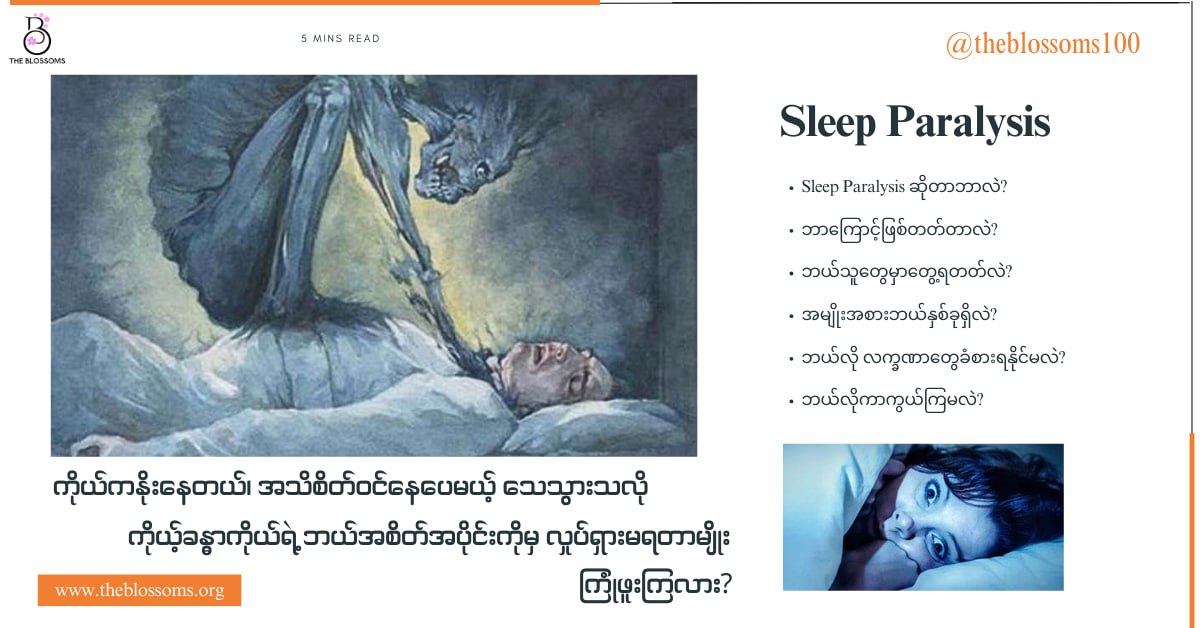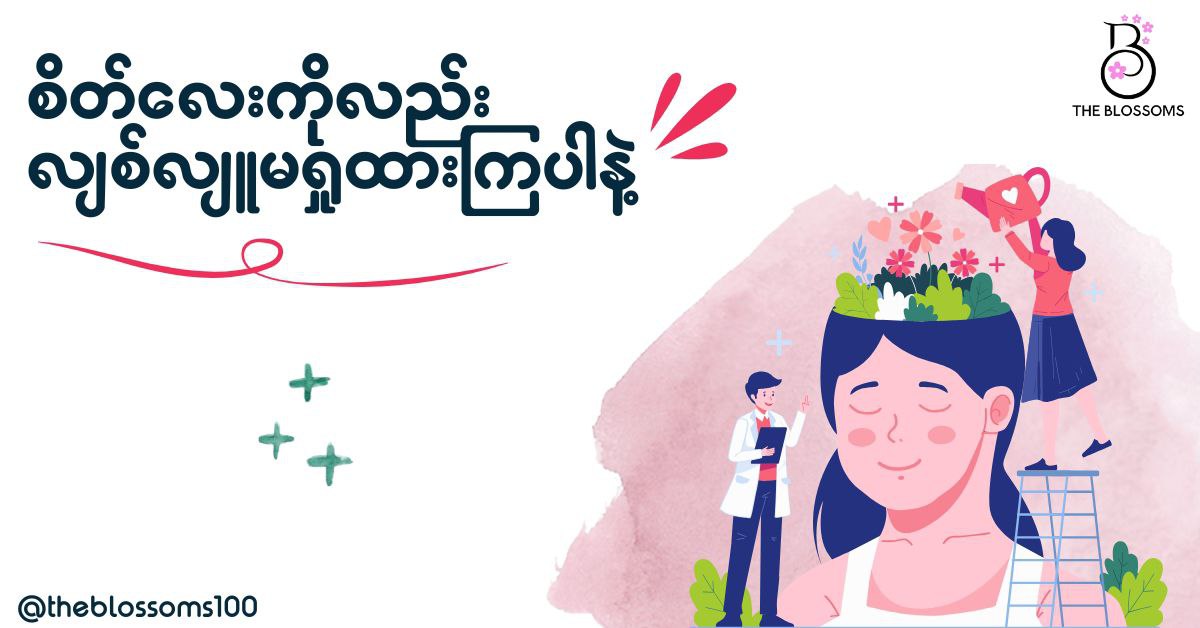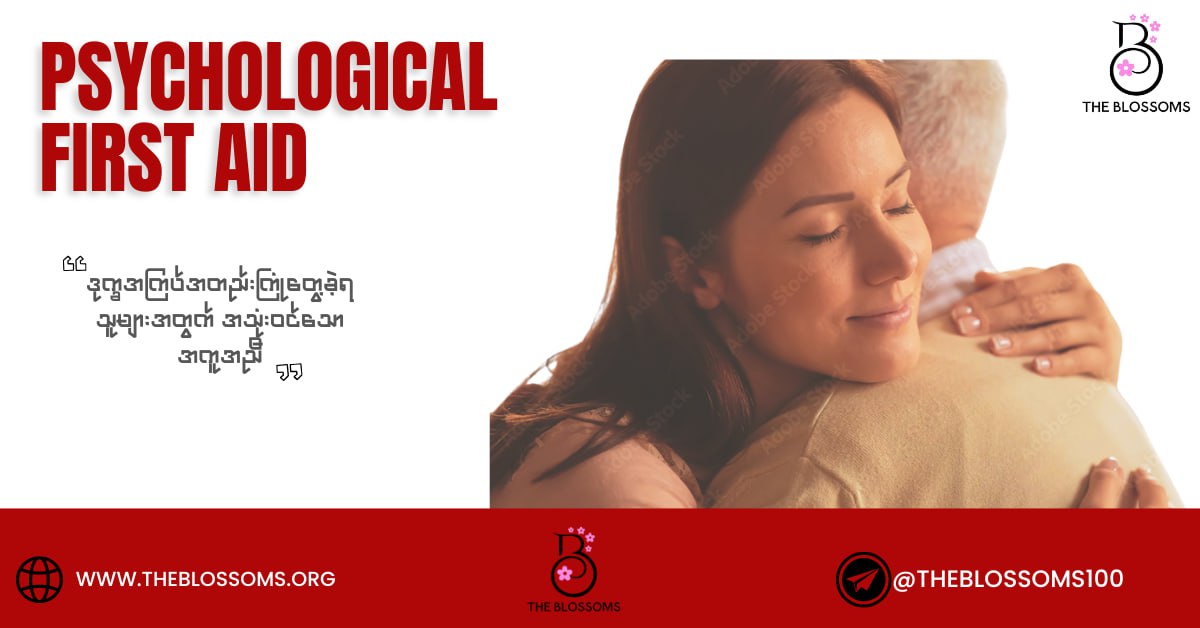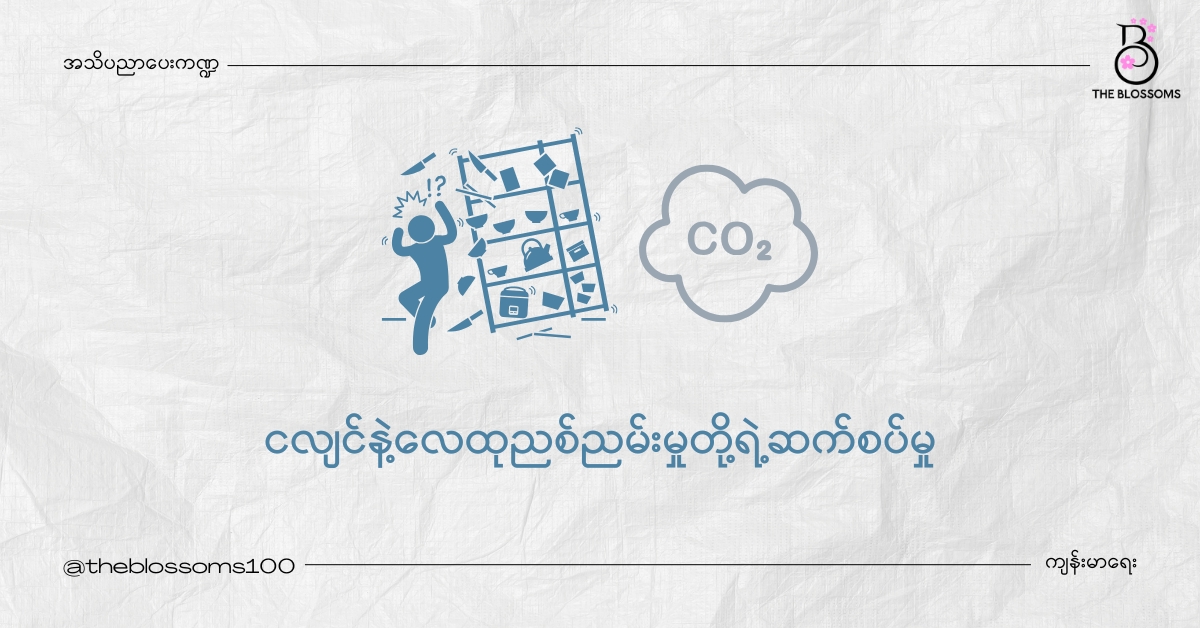ကိုယ်ကနိုးနေတယ်၊ အသိစိတ်၀င်နေပေမယ့် တစ်ယောက်ယောက်က ကိုယ့်ကို တက်ဖိထားသလိုမျိုး လှုပ်မရ၊ ပြုမရ၊ အော်မရနဲ့ တော်တော်လေးစိတ်ဒုက္ခရောက်ရတဲ့ အခြေအနေမျိုးကြုံဖူးကြလား? တစ်ခါဖြစ်ဖူးသွားရုံနဲ့ နောက်တစ်ခါ ထပ်ကြုံရမှာကို အရမ်းထိတ်လန့်သွားတဲ့ အခြေအနေမျိုးပါ။ ဒါကို အရပ်သုံးစကားအရ ဘီလူးစီးတယ်လို့ ခေါ်ကြပါတယ်။ ကိုယ်တိုင်မကြုံဖူးရင်တောင်မှ ကြားဖူးနား၀ရှိလိမ့်မယ်လို့ ထင်ပါတယ်။ ကိုယ်က ကံနိမ့်နေလို့(သို့)မကောင်းဆိုးဝါးတွေရှိနေလို့ ဒီလိုမျိုးကြုံရတာလို့လည်း တော်တော်များများ ထင်လေ့ရှိကြပါတယ်။ ဒါပေမယ့် အမှန်တော့ အဲ့လိုမဟုတ်ပါဘူးနော်။ ဆေးပညာမှာတော့ ဒါကို sleep paralysis (အိပ်စက်ခြင်းနဲ့ဆိုင်တဲ့ ပြဿနာတစ်ရပ်)လို့ သတ်မှတ်ကြပါတယ်။ ဒီတစ်ခါမှာတော့ sleep paralysisနဲ့ပတ်သတ်ပြီး အားလုံးရှင်းသွားအောင် sharingလုပ်ပေးသွားမှာဖြစ်လို့ အတူတူလေ့လာကြည့်ကြရအောင်နော်။🤗
📌အဲ့ဒါဆိုရင် sleep paralysisဆိုတာကြီးက ဘာကိုပြောတာလဲ?🤔
Sleep paralysisဆိုတာက
တော့ လူတစ်ယောက်ဟာ အိပ်ပျော်နေချိန်(သို့)အိပ်ရာနိုးခါနီးအချိန်တွေမှာ အချိန်အတိုင်းအတာတစ်ခုအထိ muscle movement ခေတ္တဆုံးရှုံးသွားတာဖြစ်ပါတယ်။ ဒီဖြစ်စဉ်ဟာ စက္ကန့်အနည်းငယ်
ကနေ မိနစ်အနည်းငယ်အထိ ကြာတတ်ပြီးတော့ အိပ်ပျော်ချိန်နဲ့နိုးစအချိန် အကူးအပြောင်းကာလတွေမှာ ဖြစ်ပေါ်လေ့ရှိပါတယ်။ တစ်ညတာအိပ်စက်တဲ့အခါမှာ REM(Rapid Eye Movement) stageနဲ့ NREM(Non-REM) stageဆိုပြီးတော့ အလှည့်ကျဖြစ်ပေါ်ပါတယ်။ REM stageမှာ လူတွေကအိပ်မက်မက်တာဖြစ်ပြီးတော့ အိပ်မက်ထဲကအတိုင်း အပြင်မှာလိုက်မလုပ်နိုင်အောင်လို့ ဦးနှောက်က စိတ်ထိန်းကြွက်သားတွေကို မလှုပ်ရှားနိုင်အောင် ထိန်းချုပ်ထားလိုက်ပါတယ်။ နိုးတော့မယ်ဆိုမှ REMကနေ NREMသို့ ပြောင်းသွားပြီး ဦးနှောက်က ခဏတုန်းက ထိန်းချုပ်ထားတဲ့ muscleတွေကို ပြန်ပြီးrelaxလုပ်ပေးတာပါ။ အဲ့ဒီလိုမပြောင်းခင် REM stageမှာတင် ရုတ်တရက်နိုးလာတဲ့အတွက်ကြောင့် စကားမပြောနိုင်တာ၊ မလှုပ်ရှားနိုင်တာပါ။ ဘာဖြစ်လို့လဲဆိုတော့ ဦးနှောက်က အိပ်နေတယ်လို့ပဲ ဆက်သတ်မှတ်ပြီး အဲ့ဒီအဆင့်မှာပဲ ဆက်ထားထားတဲ့အတွက်ကြောင့်ပါ။
📌 Sleep paralysisအမျိုးအစားတွေကရော ဘာတွေဖြစ်မလဲ? 👀
ယေဘုယျအနေနဲ့ sleep paralysisကို
1. Hypnagogic or predormital
sleep paralysisနဲ့
2. Hypnopompic or
postdormital sleep
paralysis ဆိုပြီးတော့ နှစ်မျိုးနှစ်စားရှိတယ်လို့ ယူဆနိုင်ပါတယ်။
ကွာခြားချက်အနေနဲ့ကတော့ hypnagogicဆိုတာ အိပ်ပျော်ခါစအချိန်မှာ ဖြစ်ပေါ်တာဖြစ်ပြီး hypnopompic ကတော့ အိပ်ရာနိုးခါနီးအချိန်မှာဖြစ်တာပါ။ ဒီနှစ်မျိုးစလုံးဟာ temporary muscle control လုပ်နိုင်စွမ်းမရှိတာဖြစ်ပါတယ်။
📌Sleep paralysisကို ဘယ်သူတွေမှာတွေ့ရတတ်လဲ?
ကျား၊ မ အသက်အရွယ်မရွေးဖြစ်နိုင်သော်လည်း အသက် 14-17နှစ်အတွင်း ဆယ်ကျော်သက်အရွယ်တွေမှာ ပထမဆုံးစဖြစ်လေ့ရှိပါတယ်။ Researchတွေအရ လူဆယ်ယောက်မှာ လေးယောက်ကတော့ sleep paralysisဖြစ်တတ်ပါတယ်လို့ ဆိုထားပါတယ်။ သာမန်လူတွေမှာဆိုရင် တစ်သက်မှာတစ်ခါလောက်ပဲကြုံရတတ်ပေမယ့် အိပ်စက်ခြင်းဆိုင်ရာ ရောဂါခံစားနေရသူတွေမှာဆိုရင်တော့ ခဏခဏဖြစ်နိုင်ပါတယ်။ တစ်ခါတစ်ရံ တစ်ညတည်းမှာတင်ပဲ နှစ်ခါသုံးခါကြုံရတတ်တာမျိုးပါ။
📌 Sleep paralysisကြောင့် ဘယ်လိုလက္ခဏာတွေ ခံစားရနိုင်မလဲ?
Sleep paralysisဖြစ်နေစဉ်အတွင်းမှာ
👉သတိရှိနေပေမယ့် စကားမပြောနိုင်တာ၊ ခြေလက်တွေ မလှုပ်ရှားနိုင်တာ
👉ကိုယ့်ရင်ဘတ်ပေါ်ကို တစ်ခုခုဖိထားသလိုမျိုးခံစားရကာ အသက်ရှူကျပ်တာ
👉ကြောက်ရွံ့ထိတ်လန့်တာ
👉လေထဲလွင့်မျောနေသလိုမျိုးခံစားရတာ
👉Hallucinations (ထင်ယောင်
ထင်မှားဖြစ်ခြင်း) အမျိုးအစားသုံးမျိုးဖြစ်တဲ့
📍Visual hallucinations - အမှန်တကယ်မဟုတ်တဲ့ အရာတွေကို မြင်နေရတာ(ဥပမာ အခန်းထဲမှာ ကြောက်မက်ဖွယ်ရာ တစ်ခုခု(သို့)တစ်ယောက်ယောက်ရှိနေတယ်လို့ ခံစားရတာမျိုး၊ မြင်ရတာမျိုးပါ)
📍Auditory hallucinations - အမှန်တကယ်မဟုတ်တဲ့ အသံတွေ၊ ဆူညံသံတွေကြားနေရတာ
📍Tactile hallucinations - ကိုယ့်ကို တစ်ခုခုက လာထိနေသလိုမျိူးခံစားရတာ စတဲ့လက္ခဏာတွေ ခံစားရတတ်ပါတယ်။
Sleep paralysisဖြစ်ပြီးသွားတဲ့နောက်မှာတော့
👉ကြွက်သားတွေအားနည်းကာ မောပန်းနွမ်းနယ်လာတာ
👉နှလုံးခုန်နှုန်းမြန်လာတာ
👉စိတ်ရှုပ်ထွေးလာတာ
👉စိုးရိမ်စိတ်တွေ၊ ကြောက်ရွံ့စိတ်တွေလွန်ကဲလာတာ
👉Hallucinationsတွေက memoryထဲမှာ စွဲမြဲနေနိုင်ပြီး ကိုယ့်ကိုအမြဲထိတ်လန့်စေတာ စတာတွေဖြစ်တတ်ပါတယ်။
Sleep paralysisဟာ harmful တော့မဖြစ်ပေမယ့် မကြာခဏဖြစ်နေမယ်ဆိုရင်တော့ အိပ်ရမှာကြောက်လာတာ၊ အိပ်ရေးဝဝမအိပ်ရတာတွေအပြင် နေ့စဉ်လုပ်ငန်းဆောင်တာတွေမှာပါ အာရုံစူးစိုက်မှုအားနည်းလာတာ၊ ထိခိုက်နစ်နာလာတာတွေ ဖြစ်လာနိုင်ပါတယ်။
📌 Sleep paralysis ဖြစ်နေစဉ် muscle controlပြန်ရအောင် ဘယ်လိုလုပ်မလဲ?
ဒီprocessဟာ REM stage ပြီးသွားတဲ့အခါကျမှ muscleတွေ ပြန်လှုပ်ရှားလို့ရကာ သူ့အလိုလိုပြီးသွားတာဖြစ်ပါတယ်။ တကယ်လို့ paralysisဖြစ်နေတာကို ရပ်တန့်ဖို့ဆိုရင်တော့ ပြင်ပသက်ရောက်မှုတစ်ခုခုမရှိမချင်း၊ ဘေးလူတစ်ယောက်ယောက်က ကိုယ့်ကိုလာမနှိုးမချင်း မဖြစ်နိုင်ပါဘူး။ နောက်ပြီး ကိုယ်ရဲ့သိစိတ်ထဲကနေ small body movement (လက်ချောင်း ဒါမှမဟုတ် ခြေချောင်း)လေးတစ်ခုခုကို ကြိုးစားလုပ်နေဖို့ လိုအပ်ပါတယ်။ အကြောင်းကတော့ အဲ့လိုလှုပ်ရှားနိုင်ဖို့ focusလုပ်ရာကနေ muscle controlပြန်လည်ရရှိစေပြီး sleep paralysisမှ အမြန်ဆုံးနိုးထစေနိုင်လို့ပါ။
📌ဘာတွေကြောင့် sleep paralysisဖြစ်တတ်လဲ?
အဖြစ်များတဲ့ အကြောင်းအရင်းတွေကတော့
👉အိပ်ရေးပျက်ခြင်း
👉အိပ်ချိန်မမှန်ခြင်း(အိပ်ရာ၀င်နောက်ကျတာ၊ ညဆိုင်းအလုပ်ဆင်းရတာ)
👉ပက်လက်အိပ်ခြင်း
👉အရမ်းကို ပင်ပန်းနွမ်းနယ်နေခြင်း
👉စိတ်ဖိစီးမှုများလွန်းခြင်း
👉Narcolepsy (နေ့ခင်းဘက်အလွန်အကျွံအိပ်ငိုက်ခြင်း)၊ Sleep apnea (အိပ်နေစဉ်အသက်ရှူကျပ်ခြင်း)၊ Insomnia (အိပ်မပျော်ခြင်း)စတဲ့ အိပ်စက်ခြင်းနဲ့ သက်ဆိုင်တဲ့ ရောဂါတွေ ခံစားနေရခြင်း
👉ADHDနဲ့ စိတ်ကျရောဂါများအတွက် ဆေးဝါးများသုံးစွဲနေရခြင်း
👉လေ၀င်လေထွက်မကောင်းတဲ့နေရာမျိုးမှာ အိပ်မိခြင်း
👉မျိုးရိုးဗီဇရှိခြင်း စတာတွေပါ၀င်ပါတယ်။
📌 Sleep paralysisမဖြစ်အောင်ဘယ်လိုကာကွယ်မလဲ?
✨အိပ်ရေး၀၀အိပ်ပါ။(တစ်ညလျှင် 7-9နာရီကြား အိပ်တာ)
✨ပုံမှန်အိပ်ချိန်ဇယားတစ်ခုဖြင့် နေ့တိုင်းအိပ်ရာ၀င်မယ့်အချိန်၊ အိပ်ရာထမယ့်အချိန်တွေကို စနစ်တကျသတ်မှတ်ပြီးလိုက်နာပါ။
✨အိပ်ရင် ဘေးစောင်းအိပ်ပါ။
✨အိပ်ရာ၀င်ခါနီး အရက်၊ ကော်ဖီနဲ့ ကဖိန်းဓာတ်ပါတဲ့ အရည်တွေသောက်သုံးတာ ရှောင်ပါ။ ပြီးတော့ screen timeကို limitလုပ်ပါ။
✨ပုံမှန်လေ့ကျင့်ခန်းလုပ်တာက နှစ်ခြိုက်စွာအိပ်ပျော်စေနိုင်ပေမယ့် ပြင်းထန်တဲ့လေ့ကျင့်ခန်းလုပ်တာတွေကိုတော့ ရှောင်ကြဉ်ပါ။
✨စိတ်ဖိစီးမှုကင်းဝေးအောင်နေပါ။အိပ်ရာမ၀င်မီ စိတ်ကိုrelaxဖြစ်စေမယ့် အသက်ပြင်းပြင်းရှူခြင်း၊ တရားထိုင်ခြင်း၊ ယောဂကျင့်ခြင်း စတာတွေကို လေ့ကျင့်ပေးပါ။
✨အိပ်စက်ခြင်းဆိုင်ရာရောဂါများအတွက် ဆေးကုသမှု စနစ်တကျခံယူပါ။
✨ကိုယ့်အိပ်ရာကို သက်တောင့်သက်သာဖြစ်အောင်ပြင်ဆင်ပါ။ အထူးသဖြင့် လေ၀င်လေထွက်ကောင်းတဲ့အပြင် မှောင်မိုက်တိတ်ဆိတ်ပြီး အေးမြတဲ့အခန်းတွေမှာ အိပ်စက်ပါ။
ဒီအချက်လေးတွေကတော့ sleep paralysisမဖြစ်အောင် အတတ်နိုင်ဆုံးကာကွယ်ပေးနိုင်မယ့် နည်းလမ်းလေးတွေဖြစ်ပါတယ်။
👋 ကဲ--- ဒီလောက်ဆိုရင်တော့ sleep paralysisနဲ့ ပတ်သတ်ပြီး တော်တော်များများ သိသွားလောက်ပြီလို့ထင်ပါတယ်။
🌸🌸 အားလုံးပဲ sleep paralysisကနေကင်းဝေးပြီး ကောင်းမွန်တဲ့အိပ်စက်ခြင်းတွေနဲ့အတူ အိပ်မက်လှလှလေးတွေ ပိုင်ဆိုင်နိုင်ကြပါစေရှင်။ 😴🌟🌙
(English Version)
Have you ever felt a heavy weight or presence over you, while fully conscious, and tried desperately to move or call out but couldn't?For most people, it can be a very terrifying experience or memory. Many people believe this occurs due to bad luck or some kind of evil presence. In fact, this phenomenon is known as sleep paralysis in the medical field. Today, let's take the opportunity to explore and learn more about this unusual sleep disorder.🤗
📌 What is sleep paralysis?🤔
Sleep paralysis is a temporary loss of muscle movement that can occur when falling asleep or waking up. Episodes of sleep paralysis typically last from a few seconds to a few minutes and happen during the transitions between sleep and wakefulness. During sleep, the brain cycles between REM(Rapid Eye Movement) and NREM (Non-REM) stages. During REM sleep, when dreaming occurs, the brain intentionally paralyzes the body's voluntary muscles to prevent the individual from acting out their dreams. However, before the brain has had a chance to unparalyze the muscles, if one wakes up suddenly during the REM stage, they may find themselves unable to move or speak. This is because the brain still considers them to be asleep and in the REM stage, so it maintains the temporary paralysis.
📌 How many types of sleep paralysis are there?👀
Generally, there are two main types of sleep paralysis, which involve a temporary loss of muscle control:
1. Hypnagogic or predormital
sleep paralysis - happens
when falling asleep
2. Hypnopompic or
postdormital sleep
paralysis - happens when
waking up
📌Who experience sleep paralysis?
Sleep paralysis can affect both men and women of any age group. However, as the average age when it first occurs is 14-17 years, it is most common in teenagers. For those with sleep disorders, it can be a recurring issue, with some reporting 2 or 3 episodes in one night, rather than a single isolated incident over a lifetime.
📌 What are the common symptoms during and after sleep paralysis?
During sleep paralysis, the following common symptoms are experienced:
👉Inability to move or speak while conscious
👉Shortness of breath due to a feeling of heavy pressure or presence on the chest
👉Fear and anxiety
👉A sense of floating and levitating
👉Three types of hallucinations:
📍Visual hallucinations - perceiving an evil presence in the room or seeing something frightening
📍Auditory hallucinations - hearing sounds and voices that are not real
📍Tactile hallucinations - having a false sense of touch or physical sensations
After sleep paralysis, people may feel:
👉Weakening of muscle strength or muscle fatigue
👉Rapid or irregular heartbeat
👉Mental confusion
👉Residual feelings of fear or panic
👉Vivid memories of sleep paralysis experience
While sleep paralysis is not physically harmful, individuals who experience it very often may develop a fear of sleep, leading to insomnia. This sleep disruption can also cause cognitive difficulties in their daily lives.
📌 How does an episode of sleep paralysis end?
The episode usually resolves on its own as the REM sleep stage concludes, or it can be broken when someone touches you or speaks to you. Making an intense effort to move, even just a finger or toe, can also help you regain muscle control and escape the paralysis.
📌 What are the causes of sleep paralysis?
Sleep paralysis can arise from a variety of physiological, psychological, and lifestyle factors, including:
👉Sleep deprivation
👉Irregular sleep schedules(sleeping late and working night shifts)
👉Sleeping on the back
👉Feeling very tired
👉Higher levels of stress and anxiety
👉Suffering from sleep disorders like narcolepsy (excessive daytime sleepiness), sleep apnea, and chronic insomnia
👉Taking medications for depression and ADHD
👉 Sleeping in a poorly ventilated space
👉Having a genetic component to sleep paralysis
📌 How can sleep paralysis be prevented?
Here are several helpful tips to prevent sleep paralysis.
✨ Ensure you get 7-9 hours of sleep per night to get adequate sleep.
✨ Maintain a consistent sleep schedule by going to bed and waking up at the same time everyday, including weekends.
✨ Sleep on your side rather than on your back.
✨ Avoid the intake of alcohol and caffeinated drinks, and limit your screen time, especially before bedtime.
✨ Regular exercises can improve sleep quality, but avoid vigorous activities close to bedtime.
✨ Practice relaxation techniques such as deep breathing, meditation, and yoga to reduce stress levels.
✨Seek medical treatment for underlying sleep disorders.
✨ Create a restful sleeping environment with good ventilation. This includes a comfortable mattress and a dark,quiet, and cool room.
👋We hope you now have a better understanding of sleep paralysis.
🌸🌸We wish you a good night's sleep, free from the distressing occurrence of sleep paralysis, and filled with sweet dreams instead. 😴🌟🌙
Thanks for Reading!❤️
Sources
https://my.clevelandclinic.org/health/diseases/21974-sleep-paralysis
https://www.webmd.com/sleep-disorders/sleep-paralysis
https://www.nhs.uk/conditions/sleep-paralysis
https://www.sleepfoundation.org/parasomnias/sleep-paralysis
https://en.wikipedia.org/wiki/Sleep_paralysis
#MediShare
#graphicbywintwah
 THE
THE 


